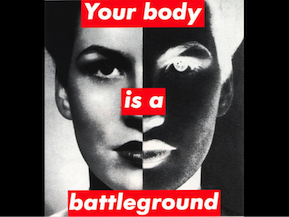Special Topics - DSJS 1090
Diversity and Social Justice Studies (DSJS) 1090
1) Fall 2019 -- DSJS 1090: Love and Labour
Some of the common and everyday artefacts of love and relationships in contemporary Canada (and many other countries) include coffee, cell phones, social media, chocolate, flowers, diamonds, and weddings (not always in that order). These artefacts, though, give us a window into much more than how ideas about love and relationship are currently practiced; they are also venues into thinking about a number of other wide-ranging social and cultural beliefs and practices. Using these artefacts as our starting points, and using a variety of lenses to examine them more closely—including advertising and consumerism, labour and work, globalization and migration, care and care work, structures of family and ideas about childhood, 'built' and 'natural' environment, justice and rights—this course will look at some of the ways these artefacts circulate and the many meanings they embody and reflect. Our particular focus will be on how they construct and perpetuate ideas about gender, race, sexuality, dis/ability, class, and national identity (among other identity categories), and at how they can help us think more complexly about the relationships between identity, knowledge, and power.
2) Bodies and Power

“Your body is a battleground.”
- Barbara Kruger, 1989
This caption on an artwork by Barbara Kruger (1989) reflects the relationship that often exists between bodies and power, at least some of the time, for many of us. But how are bodies a “battleground”—for whom, and around what kinds of issues? Do some bodies seem more fought over than others, and if so, why is that? If bodies are presumed to “speak” about identity categories, such as gender, race, sexuality, disability, nationality, etc, then how are they always being socially defined, regulated, and controlled? And can bodies, can we, resist these definitions—and how? We often think of our bodies as ours alone, to do with what we please. And yet, many of us, at least some of the time, also recognize that our bodies are always being watched and judged in ways that have much larger social consequences. Through a variety of examples, this course will investigate how bodies are defined and controlled, and how they variously (can) respond to that regulation. Exploring the complicated and often contentious relationships between bodies and power is a way into thinking about some central concerns and concepts in DSJS: social constructionism, equality and equity, privilege and discrimination, intersectionality, knowledge and frameworks, social control and regulation, protest and resistance, pleasure and desire…
3) Identities and Place
The importance of “place” and “space” to how we identify ourselves, as well as to how others identify us, is often either taken for granted, or completely not seen and overlooked. Most places are usually simply taken for granted, assumed to be neutral and universal, ordinary and mundane—and fully available to everyone (the days of segregated places being past us, we say—[except for public bathrooms]). This belief is so pervasive, so widespread, that many of our ideas about “rights” see getting access to place as a move towards equality and social justice. And yet, in many instances, we all also recognize that place is not the same for everyone—neither defined nor experienced in the same ways. This course aims to explore some of the reasons for this latter recognition… It explores how place both shapes and reflects identities (such as gender, sexuality, race, dis/ability, and citizenship, among others) in all sorts of ways: how it constructs their definitions; how it shapes their possibilities; how it historically and socially limits and delimits their social mobility; how it frames their safety and risk/danger; and how it suggests and even enforces their belonging/exclusion. Identities make a difference to whether place is welcoming or hostile/accessible or not/home or alien; to questions of belonging or exclusion; and to assumptions about safety or risk/danger. Place is material—a location, a history, a dot on a map; and place is symbolic—feeling at home, feeling safe, belong somewhere (or not). Through a variety of examples/topics, we will explore some of the complexities of interactions between identities and place, paying attention both to how identities are socially constructed, and how places are never neutral, but always part of this social construction.
